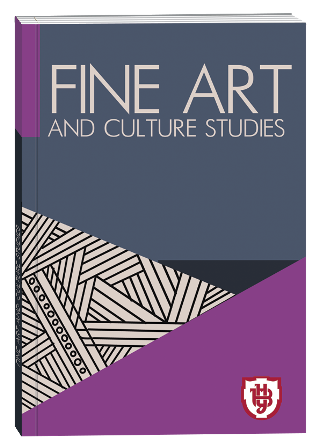THE INFLUENCE OF IRCAM ON THE DEVELOPMENT OF MUSIC CULTURE OF THE XX-XXI CENTURY
DOI:
https://doi.org/10.32782/facs-2022-1-17Keywords:
IRCAM, electroacoustics, Alla Zagaykevich, technike, composerAbstract
The aim of the research is to outline the influence of the Institute for Research and Coordination of Acoustics / Music (IRCAM) on the development of music culture of the XX-XXI centuries. The research methodology includes the use of an analytical method to highlight the role and significance of IRCAM. The method of synthesis allows highlighting the dominant features that characterize the specifics of electroacoustic works. The application of the methodology of cultural studies is necessary to determine the links between different areas of musical activity and the role of the technological level in the formation of certain areas and techniques of composition. The scientific novelty is to determine the role of the Institute for Research and Coordination of Acoustics / Music (IRCAM) in contemporary music culture and highlight the contribution of Alla Zagaykevych in promoting methods studied at a French institution in the domestic school of composition. Conclusions. The opening of IRCAM was a significant event in music life. This institution helps to introduce musicians with systematic activities related to mastering new techniques of composition, research of acoustic qualities of sound, introduction of innovations in the creative process, etc. The potential and progressive nature of IRCAM has been developed under the guidance of lead composer, conductor and theorist Pierre Boulez. It can be said that due to the opportunities to study innovations implemented at the Institute for Research and Coordination of Acoustics / Music, a qualitative leap in the development of domestic music culture has taken place. The work of Ukrainian artist Alla Zagaykevych, which is associated with the creation of electroacoustic compositions, became possible thanks to training at IRCAM. The composer also implements the acquired experience in pedagogical activity, which is confirmed by the modern compositional practice of her students. The writing of electroacoustic works is of a promising nature, and their study may be the subject of further research.
References
Загайкевич Алла Леонідівна. URL: http://composersukraine.org/index.php?id=583 (дата звернення: 09.02.2022).
Кравченко А. Електроакустичні та аудіовізуальні твори в естетосфері ансамблевої культури України (кінець ХХ – початок ХХІ століття). Актуальнi питання гуманiтарних наук, 2020. Вип 31, том 1. С. 147-151.
Кущ Є. Електромузичний інструментарій як еволюційний фактор культури : монографія. Київ : НАКККіМ, 2015. 160 с.
Лебідь Ю. Специфіка сучасних композиторських технік крізь призму творчості П’єра Булеза, 2021. Вип. 39. т. 2. С. 29-32.
Ліцкевич О. Як навчитися чути музику свого "Міста": інтерв’ю з композиторкою Аллою Загайкевич. Суспільне. Культура, 29.08.2021. URL: https://suspilne.media/205452-urad-zatverdiv-poradok-peredaci-kostiv-navidnovlenna-pamatok-komunalnoi-vlasnosti/ (дата звернення: 09.02.2022).
Овсяннікова-Трель О.А. «Нова простота» як системний жанрово-стильовий феномен в сучасному музичному мистецтві. Одеса: Видавничий дім «Гельветика», 2021. 448 с.
Ракунова І. Нові композиторські технології (на прикладі творчості Алли Загайкевич) : автореф. дис. ... канд. мистецтвознав.: 17.00.03. Київ, 2008. 17 с.
Соколова Ю.Ю., Поліщук А.В. (2021). Електроакустичні твори Алли Загайкевич та їхній вплив на українське виконавське мистецтво. Інноваційна педагогіка, 2021. 40. С. 92-95.
Юферова Г. В. Музичні комп’ютерні технології в комунікаційних процесах у сучасній українській музиці. Дис. канд. мистецтв.; Національна музична академія України ім. П.І. Чайковського. Київ, 2021. – Сумський державний педагогічний університет ім. А.С. Макаренка, Суми, 2021. 255 с.
IRCAM. Research Unit STMS. URL: https://www.ircam.fr/recherche/ (дата звернення: 09.02.2022).







